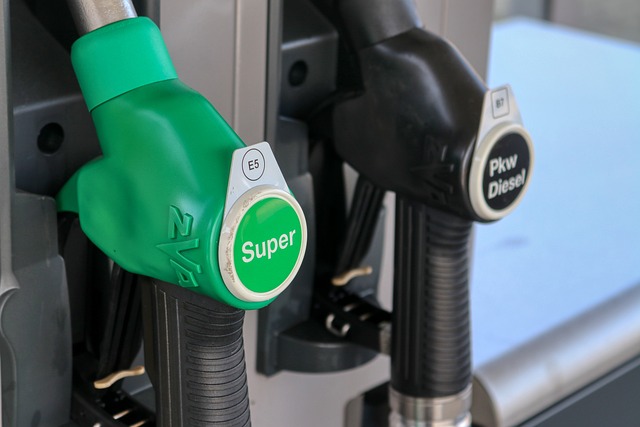In the world of engines and combustion systems, many components work silently behind the scenes to ensure smooth and efficient operation. Among them, the fuel nozzle plays a crucial role in controlling how fuel is delivered to the combustion chamber. While small in size, its impact on performance, efficiency, and emissions is enormous.
What is a Fuel Nozzle?
A fuel nozzle is a precision-engineered component that sprays fuel into the combustion chamber of an engine. It atomizes the fuel into fine droplets, ensuring even mixing with air. This process is vital for optimal combustion, which in turn affects power output, fuel efficiency, and emission levels.
How Does It Work?
Fuel nozzles operate under high pressure. When fuel passes through the nozzle, it is forced through tiny holes or openings, breaking it into a fine mist. This fine spray helps the fuel mix thoroughly with air, ensuring complete combustion.
Key Functions of a Fuel Nozzle
- Fuel Atomization
- Breaks down liquid fuel into small particles to increase the surface area for efficient burning.
- Fuel Distribution
- Ensures even distribution of fuel across the combustion chamber.
- Controlled Fuel Flow
- Delivers the precise amount of fuel needed depending on engine load and speed.
- Emission Control
- Better combustion reduces harmful exhaust emissions like carbon monoxide and unburned hydrocarbons.
Types of Fuel Nozzles
Fuel nozzles come in various designs depending on the engine type and fuel system. Common types include:
- Air-Blast Nozzles – Used in large industrial turbines, mixing air and fuel before combustion.
- Pressure-Swirl Nozzles – Common in diesel engines; create a rotating spray for better atomization.
- Plain Orifice Nozzles – Basic type used in many small engines; simple and effective.
- Dual Orifice Nozzles – Used in high-performance engines for more controlled fuel delivery.
Applications Across Industries
Fuel nozzles are not just found in cars and trucks—they’re vital in:
- Aviation: Ensuring precise fuel delivery in jet engines.
- Power Generation: Used in turbines for electricity generation.
- Marine Engines: Supporting efficient fuel use in ships.
- Agricultural Machinery: Enhancing the performance of tractors and harvesters.
Maintenance Matters
A clogged or damaged fuel nozzle can lead to poor fuel economy, rough engine operation, and increased emissions. Regular cleaning and timely replacement are key to maintaining peak engine performance.
The Science Behind Fuel Injection
At its core, the fuel nozzle is responsible for transforming liquid fuel into a fine spray, or mist, that mixes with air before ignition. The quality of this atomization directly affects how completely the fuel burns. Better atomization leads to:
- More complete combustion
- Increased power output
- Lower emissions
- Improved fuel economy
In modern engines, particularly diesel engines, the injection pressure can reach up to 2,000 bar or more, requiring the nozzle to be highly durable and precise.
Types of Fuel Nozzles in Detail
Let’s take a closer look at some common types and where they’re used:
1. Pressure Swirl Nozzles
These use centrifugal force to swirl the fuel before it exits the nozzle, creating a cone-shaped spray pattern. Widely used in automotive and industrial applications.
2. Air-Blast Nozzles
Common in gas turbines and aircraft engines, these nozzles use a stream of compressed air to assist fuel atomization.
3. Pintle Nozzles
Often found in older fuel injection systems, pintle nozzles use a needle that opens and closes the fuel path, offering good spray pattern control.
4. Multi-Hole Nozzles
Used in modern diesel engines, these nozzles contain multiple tiny orifices, ensuring uniform distribution and fine fuel atomization.
Innovations in Fuel Nozzle Technology
As engine technology evolves, so do fuel nozzles. Modern innovations include:
- Variable Nozzle Geometry
Some advanced fuel systems feature variable or adjustable nozzles to optimize spray patterns based on engine load and speed. - Laser-Drilled Nozzles
These nozzles are manufactured with extreme precision using lasers, improving durability and spray consistency. - Piezoelectric Injection Systems
Used in high-end diesel engines, these systems use electric charges to control injection timing with incredible speed and accuracy.
Importance in Emission Control
With global emission standards like Euro 6 and IMO Tier III, the fuel nozzle’s role in minimizing pollutants has become more critical than ever. Precise fuel delivery ensures:
- Less unburned hydrocarbons
- Reduced soot formation
- Lower NOx emissions
This is particularly important in sectors like shipping and aviation, where stricter environmental regulations are in place.
Maintenance and Troubleshooting
Fuel nozzles are prone to wear, carbon deposits, and clogging, which can lead to:
- Hard starting
- Misfires
- Loss of power
- Increased fuel consumption
Signs of a faulty fuel nozzle:
- White or black smoke from exhaust
- Knocking or rough idle
- Poor acceleration
Maintenance Tips:
- Use clean, high-quality fuel
- Regularly inspect and clean the nozzle
- Replace at manufacturer-recommended intervals
Final Thoughts
The fuel nozzle may be small, but it plays a big role in energy efficiency and engine health. Whether you’re maintaining a diesel generator, managing marine engines, or driving a car, understanding the function and care of fuel nozzles can lead to better performance and lower costs in the long run.
